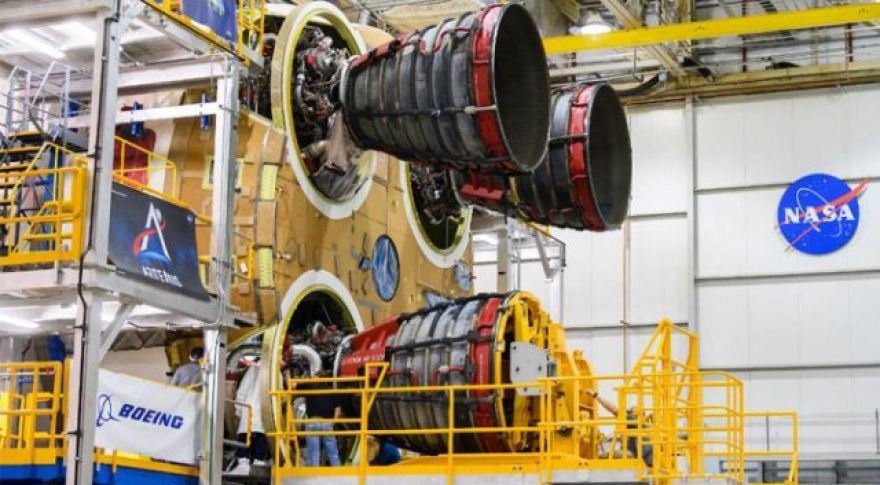
NASA Installs Final RS-25 Space Shuttle Engine on SLS Core
NASA is heading back to the moon, and it’s planning to use the long-delayed Space Launch System () to get there. The agency is working to assemble the first SLS rocket, which will be the most powerful in the world upon completion. Some of that power will come from four RS-25 engines on the core stage. If they look familiar, that’s because the RS-25 has a storied history in NASA’s Space Shuttle program, having first debuted in the 1970s. Now, NASA has just finished installing them on the SLS.
The SLS will be NASA’s new super heavy-lift launch vehicle, the first it has had since the Saturn V program ended.
To get the SLS to distant locales like the Moon, Mars, and Jupiter, it will use a pair of massive solid rocket boosters alongside the four RS-25 liquid fuel engines. In the interests of time and cost savings, NASA is using engines that previously flew as part of Space Shuttle missions. Each of the first four SLS engines has its own backstory.
Measuring at 212 feet from end to end, the core stage with all four RS-25 engines attached is the largest rocket stage has built since the Saturn V stages for Apollo. Excited to see it in person at in New Orleans next month!
— Jim Bridenstine (@JimBridenstine)
The first one, which NASA attached last month, is Engine 2056. That part rode into space with the shuttle Discovery for the first launch following the Columbia disaster (STS-114). It was also on Atlantis for the final mission of the Shuttle program (STS-135). Engine number two is E2045, which NASA used on Atlantis from STS-110 until the spacecraft’s retirement. It was also used on Discovery for STS-121, so the Artemis I launch will be a reunion of sorts.
The SLS got E2058 installed just a few days ago. This RS-25 engine was a Discovery engine for many flights starting with STS-116 and ending with Discovery’s last flight (STS-133). The final of the four engines, which NASA just attached to the SLS, is E2060. This is the newest of the engines, having only flown three times on three different Shuttles: Discovery, Endeavor, and Atlantis.
The RS-25 was designed by Aerojet Rocketdyne to be a reusable system. The SLS, however, is not reusable. These engines will end up in the ocean after the Artemis I flight, currently on the books for 2021. NASA expects to have a cheaper non-reusable version of the RS-25 ready in the mid to late-2020s once its supply of old Shuttle engines runs dry.
Now Read: